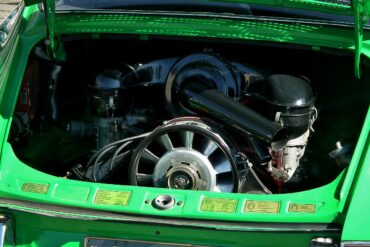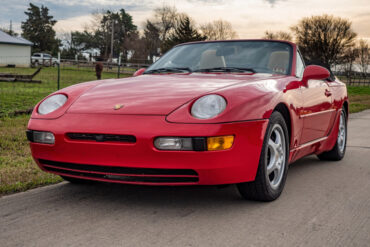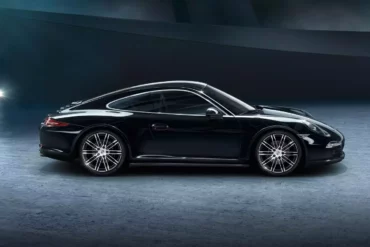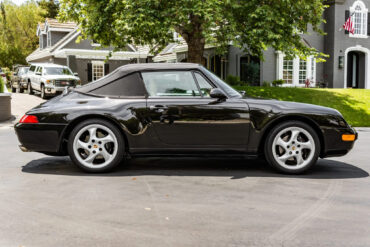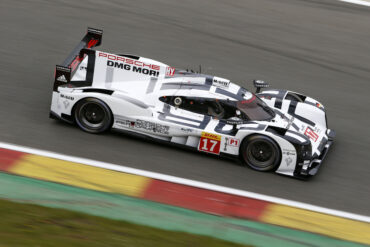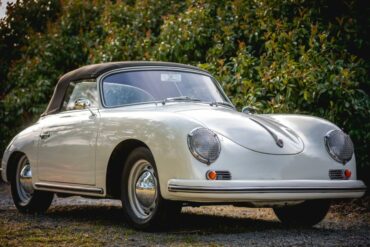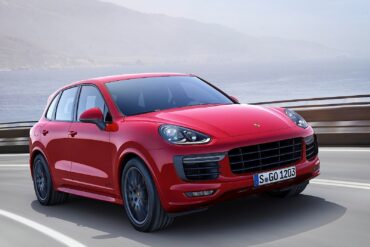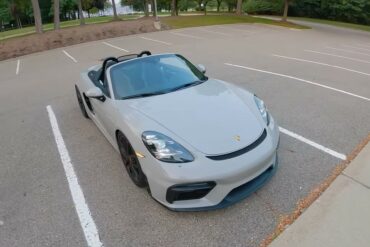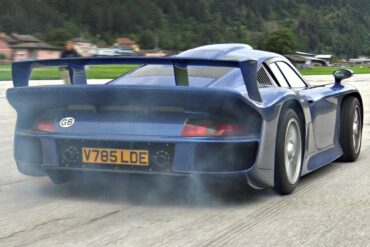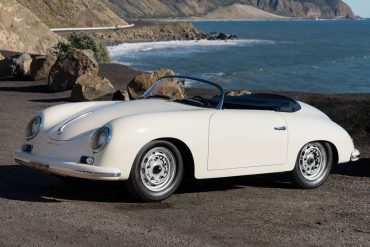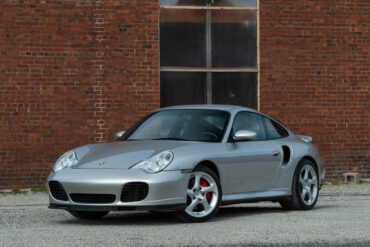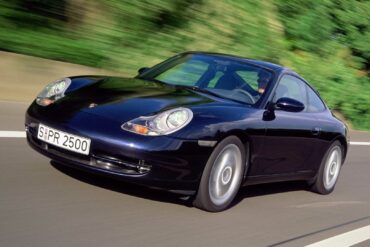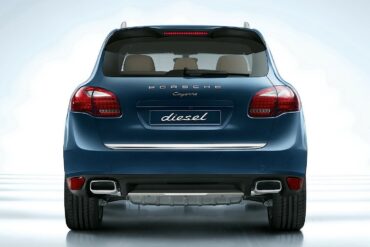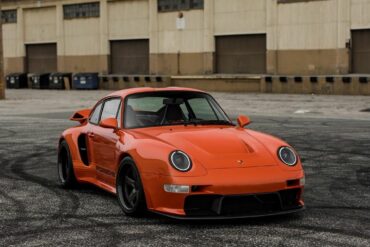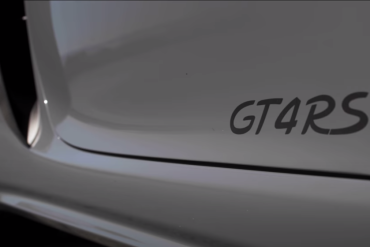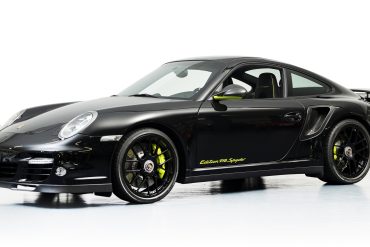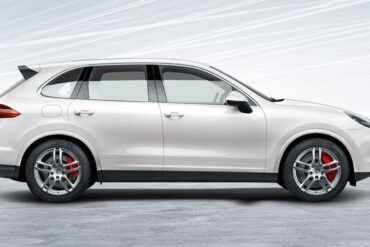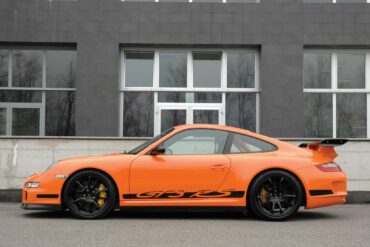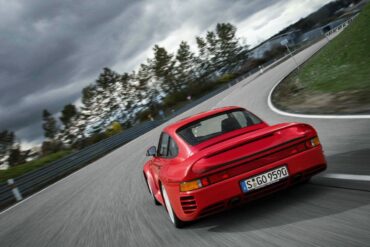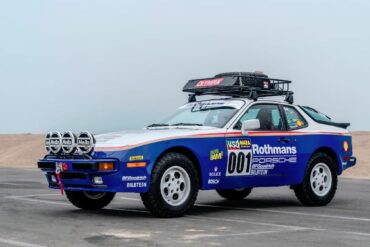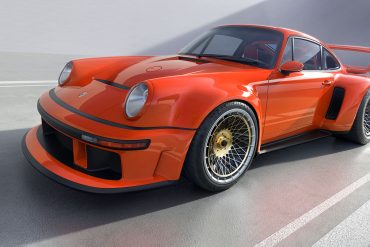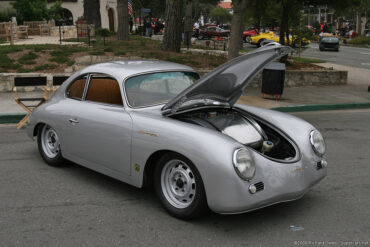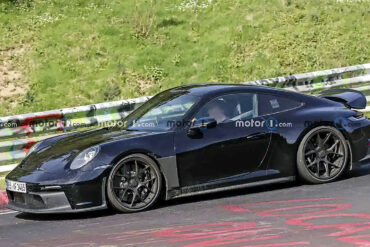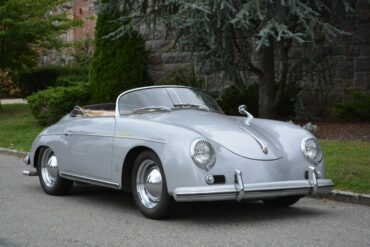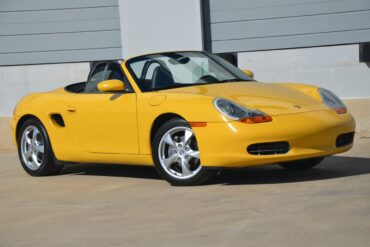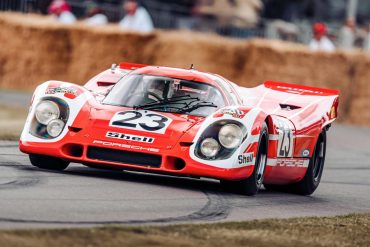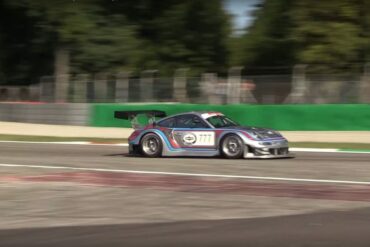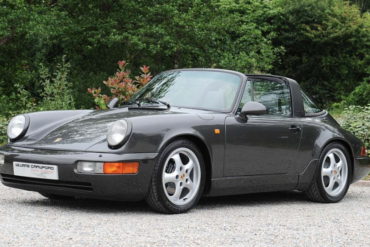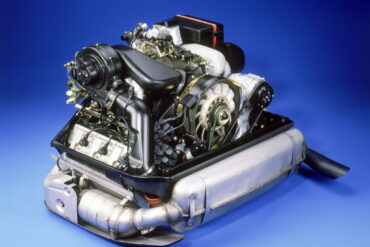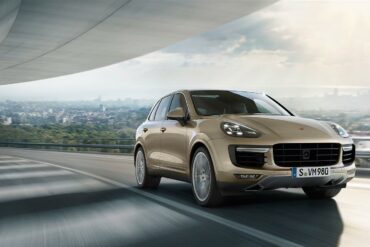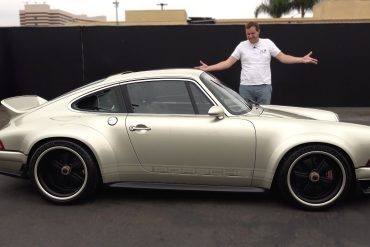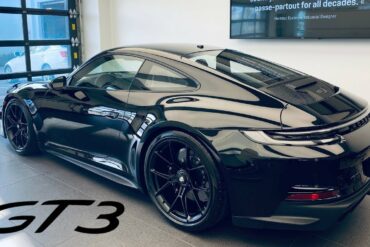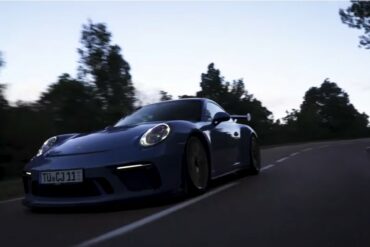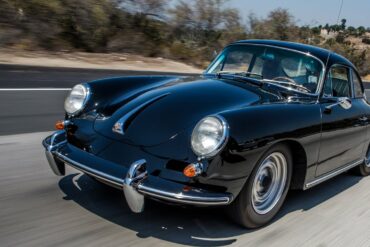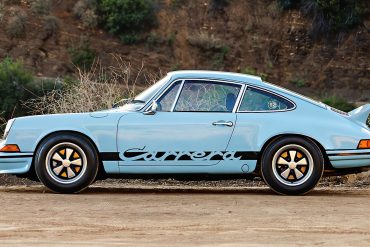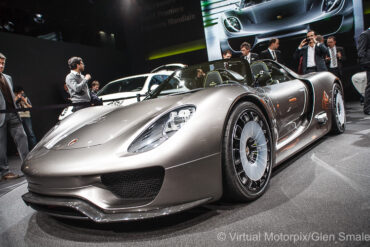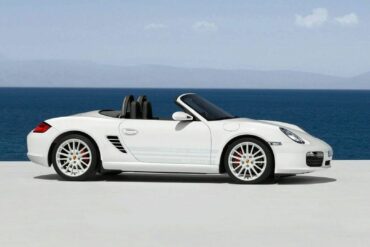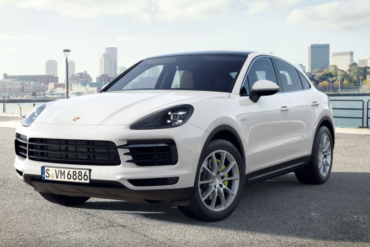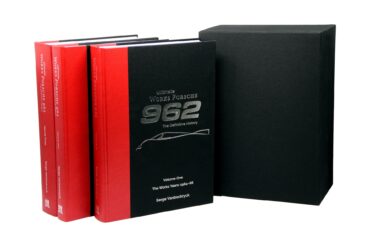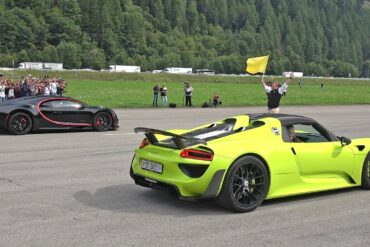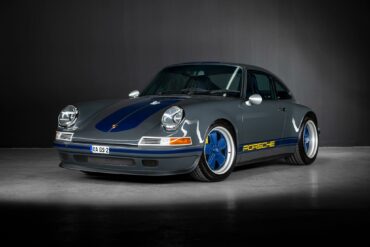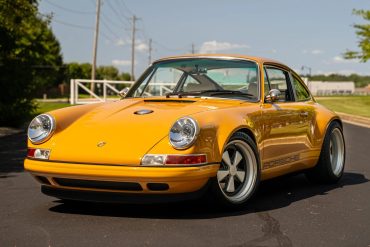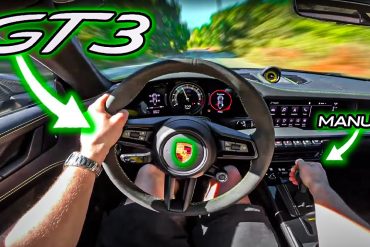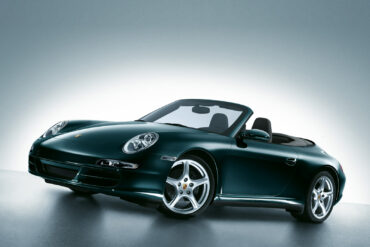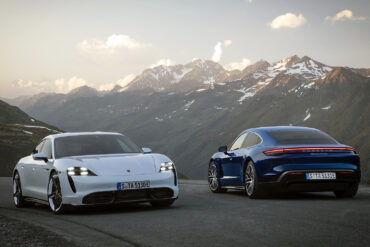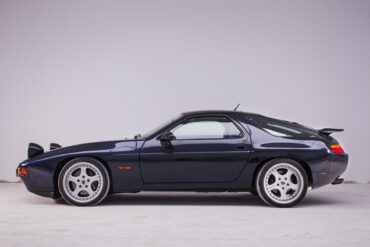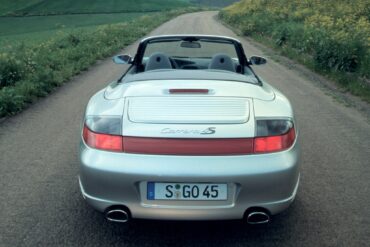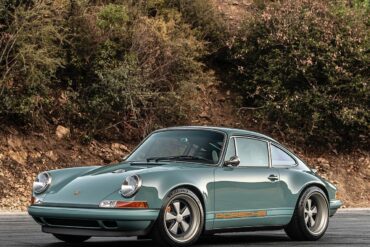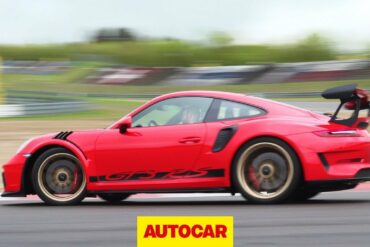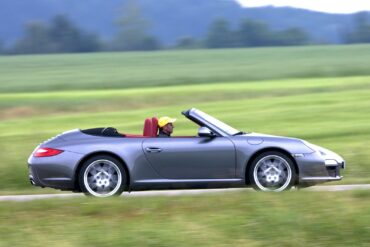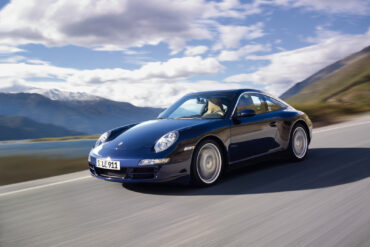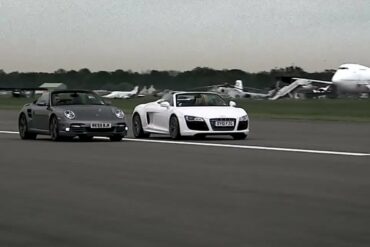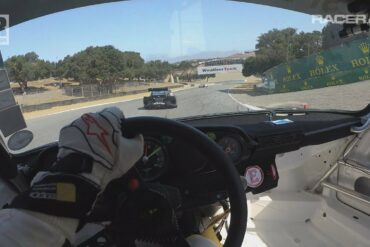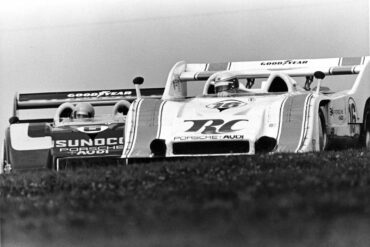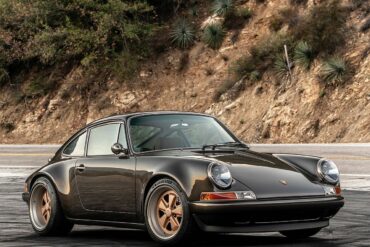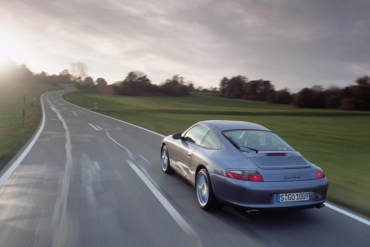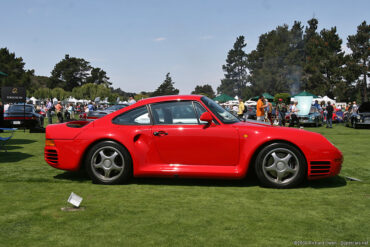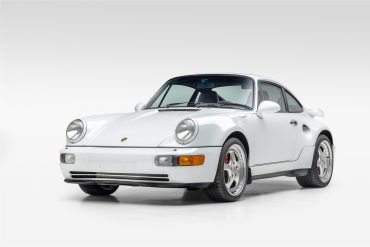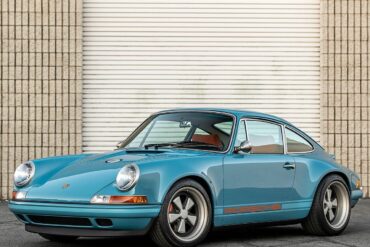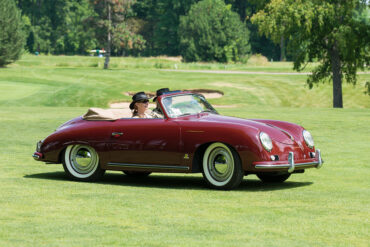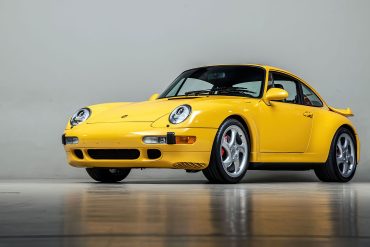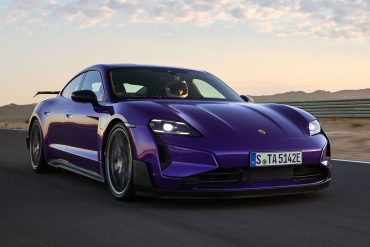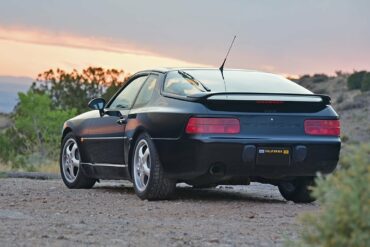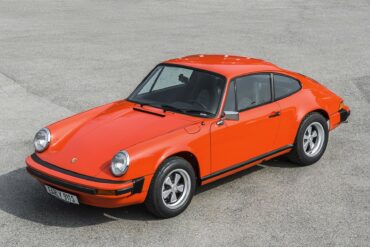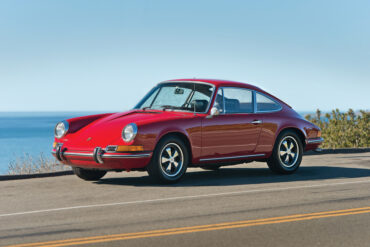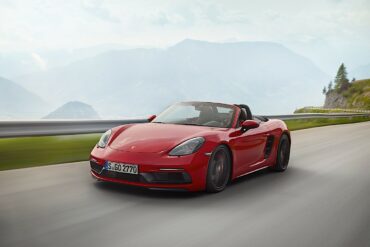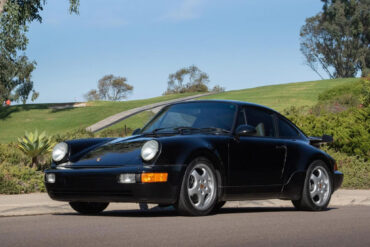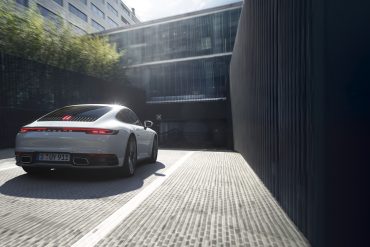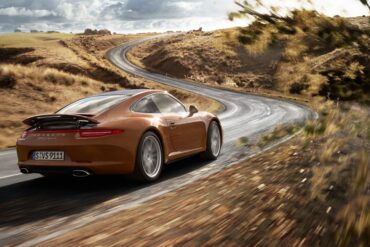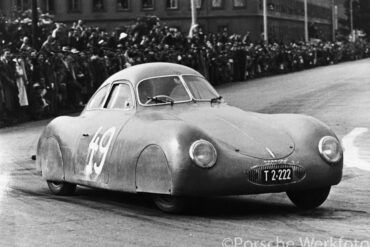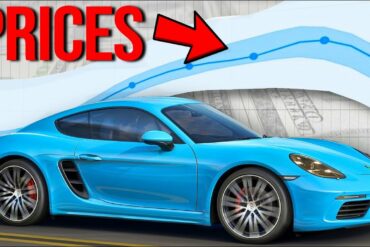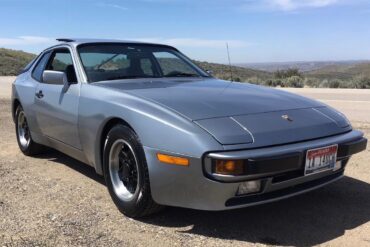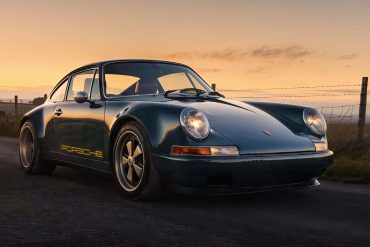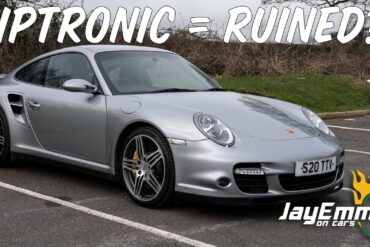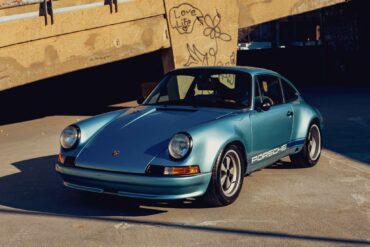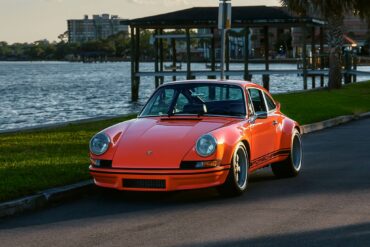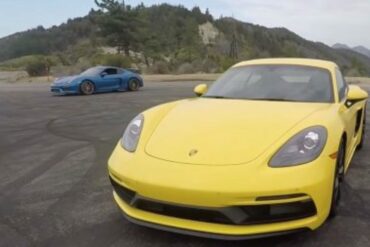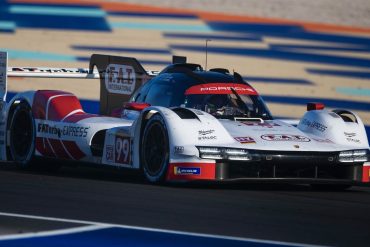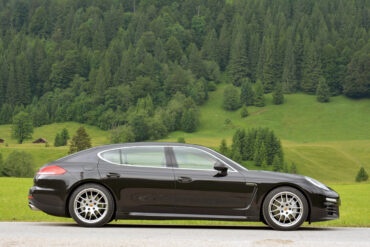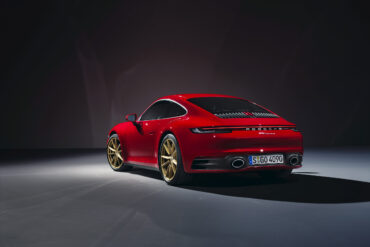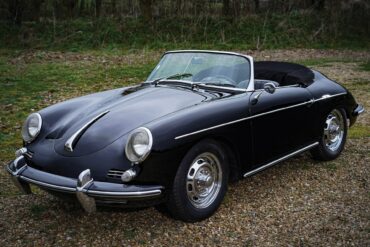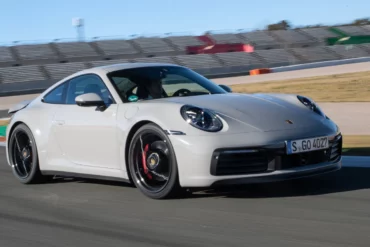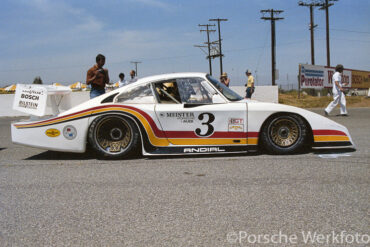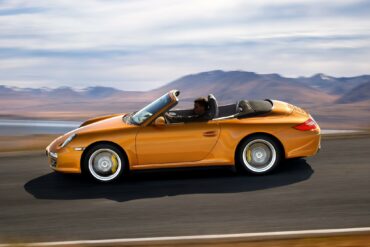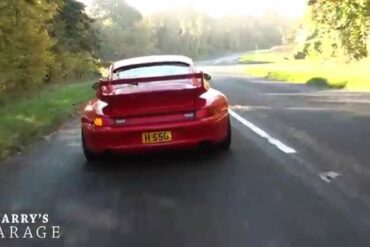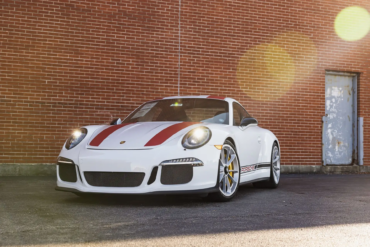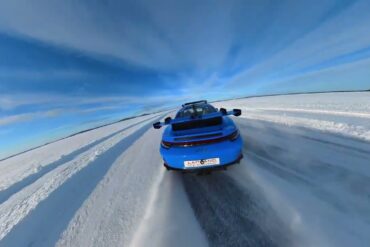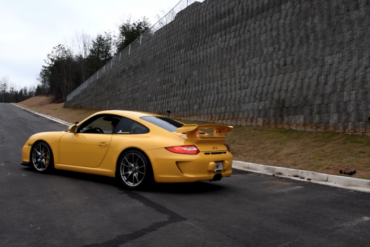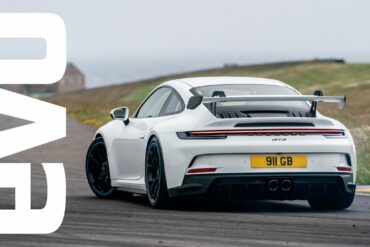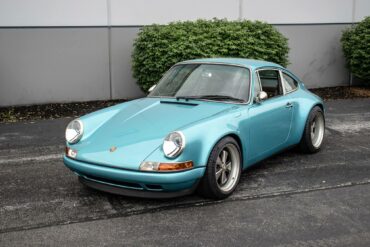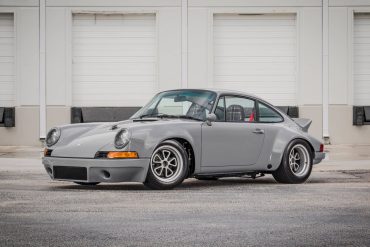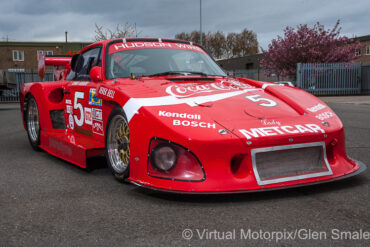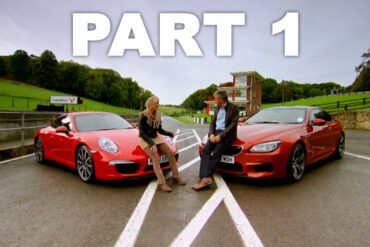Much of what Porsche learns in motor racing benefits the production models and thus the customers. The story of the...
Porsche Models
All
- Porsche Cayman 987 (2nd Gen)
- Porsche 924
- Porsche Cayenne 955 (1st Gen)
- Porsche Cayenne
- Porsche Carrera GT
- Porsche Boxster Concept
- Porsche 911
- Porsche 959
- Porsche 944
- Porsche 928
- Porsche 962
- Porsche RS Spyder
- Porsche 917K
- Porsche 914
- Porsche 918
- Porsche Cayman 981 (3rd Gen)
- Porsche Cayenne 957 (1st Gen)
- Porsche Boxster 986 (1st Gen)
- Porsche Boxster 987 (2nd Gen)
- Porsche 718 Cayman 982 (4th Gen)
- Porsche Cayenne 958 (2nd Gen)
- Porsche 356 Pre-A
- Porsche Boxster 981 (3rd Gen)
- Porsche 356 A
- Porsche 718 Boxster 982 (4th Gen)
- Porsche 356 B
- Porsche 356 C
- Porsche 968
- Porsche Panamera
- Porsche Panamera 970 (1st Gen)
- Porsche Panamera 971 (2nd Gen)
- Porsche Boxster
- Porsche Cayman
- Porsche Macan
- Porsche Taycan
- Porsche 912
- Porsche 919
- Porsche 956
- Porsche 2708 Indy
- Porsche Type 64
- Porsche 918 RSR Concept
- Porsche 918 Spyder
- Porsche 918 Concept
- Porsche 918 Spyder Prototype
- Porsche 917
- Porsche Race Cars
- 911 Carrera RS 2.7
- Porsche 550
- Porsche 718
- Porsche 901 (911)
- Porsche Concept Cars
- Porsche 904
- Porsche 906
- Porsche 907
- Porsche 908
- Porsche 910
- Porsche 911 (F-Series)
- Porsche 911 (991)
- Porsche 911 (G-Series)
- Porsche 911 (964)
- Porsche 911 (993)
- Porsche 911 GT1 Race
- Porsche 911 GT1 Street
- Porsche 911 (996)
- Porsche 911 (997)
- Porsche 916
- Porsche 919 Hybrid
- Porsche 934
- Porsche 934/5
- Porsche 935
- Porsche 936
- Porsche Mission E
- Porsche 928
- Porsche 928 S
- Porsche 928 S4
- Porsche 928 GT
- 911 Speedster Concept
- Porsche 928 GTS
- Porsche 928 Specials
- Porsche 928 H50
- Porsche 935 Tribute
- Porsche 928 CS/SE
- Porsche 597
- Porsche Mission E Cross Turismo
- Porsche 551
- Porsche Concept 917
- Porsche 911 (992)
- Porsche Sport Tourer Electric
- Porsche Le Mans Living Legend
- Porsche 960 Turismo Concept
- Porsche 919 Street
- Porsche 904 Living Legend
- Porsche 906 Living Legend
- Porsche 911 Vision Safari Concept
- Porsche Bergspyder Concept
- Porsche Macan Vision Safari
- Porsche Vision 916
- Porsche Vision 918 RS
- Porsche Vision 920
- Porsche Vision E
- Porsche 917 16-Cylinder Prototype
- Porsche 959 Gruppe B
- Porsche Carrera GT Concept
- Porsche Tapiro Concept
- 718 Cayman GT4 Rallye
- Porsche Taycan 4S
- Porsche Taycan Turbo
- Porsche Taycan Turbo S
- Porsche Typ 360
- Porsche 645 Spyder
- Porsche 550 Coupé (Prototype)
- Porsche 550 Spyder (Prototype)
- Porsche 550 Spyder
- Porsche 550 RS Spyder
- Porsche 550A RS Spyder
- Porsche 787 F1
- Porsche 804 F1
- Porsche 904 Carrera GTS
- Porsche 904/6 Carrera GTS
- Porsche 904/8 Carrera GTS
- Porsche 904 Bergspyder
- Porsche 906 Spyder
- Porsche 906 LH Coupé
- Porsche 965 (911)
- Porsche 942
- Porsche 906 E Carrera 6
- Porsche 959 Prototype
- Porsche 906/8 Coupé
- Porsche 969
- Porsche 906 Carrera 6
- Porsche 989
- Porsche 910 Bergspyder
- Porsche 910 Targa
- Porsche 909
- Porsche C88
- Porsche Panamericana
- Porsche 718 RSK Spyder
- Porsche 718 RS 60 Spyder
- Porsche 718 RS 61 Spyder
- Porsche 718 W-RS Spyder
- Porsche 718 GTR Coupe
- Porsche 718/2 F2
- Porsche 718 RS 61 LM Coupé
- Porsche 718 RSK Mittellenker
- Porsche 907 K
- Porsche 907 LH
- Porsche 908/01 LH Coupé
- Porsche 908/01 K Coupé
- Porsche 908/02 K Spyder
- Porsche 908 K Flunder Spyder
- Porsche 908 LH Flunder Spyder
- Porsche 908/03 Spyder
- Porsche 908/03 Spyder Turbo
- Porsche 919 Hybrid Evo
- Porsche LMP2000
- Porsche 984
- Porsche LMP1-98
- Porsche 961
- Porsche 917 LH-69
- Porsche WSC-95
- Porsche 917 K-69
- Porsche 917 ‘Interserie Spyder’
- Porsche 917 K-70
- Porsche 917 K-71
- Porsche 917 LH-70
- Porsche 917 LH-71
- Porsche 917/20
- Porsche 917/10-71
- Porsche 917/10-72
- Porsche 917/10 Turbo
- Porsche 917/20 Turbo
- Porsche 917/30
- Porsche 914/4 (1.7 L)
- Porsche 914/4 (2.0 L)
- Porsche 914/6 (2.0 L)
- Porsche 914 LE
- Porsche 914/4 (1.8 L)
- Porsche 914/8
- Porsche 914-6 GT
- Porsche 924 (Base)
- Porsche 924 Turbo
- Porsche 924 Carrera GT
- Porsche 924 Carrera GTR
- Porsche 924 Carrera GTS
- Porsche 924S
- Porsche 924 Rallye Turbo
- Porsche 924 Carrera GTP
- Porsche 924 SCCA
- Porsche 944 Coupe
- Porsche 944 S Coupe
- Porsche 944 S2 Coupe
- Porsche 944 S2 Cabriolet
- Porsche 944 Turbo Coupe
- Porsche 944 Turbo S Coupe
- Porsche 944 Turbo Cup
- Porsche 944 Turbo Cabriolet
- Porsche 944 GTP
- Porsche 944 Swiss Special
- Porsche 944 French Special
- Porsche 944 Celebration
- Porsche 944 S2SE
- Porsche 968 Coupe
- Porsche 968 Cabriolet
- Porsche 968 CS Coupe
- Porsche 968 Turbo S
- Porsche 968 Turbo RS
- Porsche 968 Sport
- Porsche 959 Rally
- Porsche 959 Komfort
- Porsche Cayenne 9YA (3rd Gen)
- Porsche 959 Sport
- Porsche Boxster (Base)
- Porsche Boxster S
- Porsche Boxster S Special Edition
- Porsche Boxster Spyder
- Porsche Boxster RS 60 Spyder
- Porsche Boxster GTS
- Porsche Boxster T
- Porsche Cayman (Base)
- Porsche Cayman S
- Porsche Cayman GTS
- Porsche Cayman GT4
- Porsche Panamera Sport Turismo
- Porsche Cayman R
- Porsche Macan 95B (1st Gen)
- Porsche Cayman S Black Edition
- Porsche Macan (Base)
- Porsche Cayman S Sport
- Porsche Macan S
- Porsche Cayman S Design Edition 1
- Porsche Macan GTS
- Porsche Cayman T
- Porsche Macan Turbo
- Porsche Taycan (Base)
- Porsche Cayman GT4 Clubsport
- Porsche Taycan 4
- Porsche 718 Boxster 25
- Porsche Formula E
- 964 Carrera 2
- 964 Carrera 4
- ’30 Jahre’ Anniversary
- 964 Speedster
- 964 Turbo
- 964 Carrera RS
- 964 Carrera Cup
- 964 RSR
- Porsche Cayman GT4 RS
- 993 Carrera
- 993 Carrera 4
- 911 Edition 50
- 911 2.0 Bertone Roadster
- 993 Carrera 4S
- Porsche Macan T
- Porsche Mission R Electric
- 993 Carrera S
- 993 Targa
- Porsche Vision Gran Turismo
- 992 Sport Classic
- 993 Turbo
- 993 Carrera RS
- 996 Carrera
- 993 GT2
- 996 Carrera 4
- 992 America Edition 911
- 993 Carrera Cup
- 996 Targa
- 996 Carrera 4S
- Porsche 963
- 996 Turbo
- Porsche 718 Cayman GT4 ePerformance
- 996 Turbo S
- 996 GT3
- 996 GT3 RS
- 996 GT2
- 718 Boxster
- 996 GT3 Cup
- 996 GT3 R
- 996 GT3 RSR
- 997 Carrera
- 996 GT3 RS Race
- Porsche 991 (991)
- 997 Carrera S
- 997 Carrera 4
- 997 Carrera 4S
- 997 Targa
- 911 Carrera 3.0 Coupe (G-Series)
- 997 Targa 4S
- 997 Turbo
- 997 Turbo S
- 997 GT2
- 992 Carrera T
- 997 GT2 RS
- 997 Speedster
- 997 Carrera GTS
- 992 Dakar
- 997 Carrera 4 GTS
- 997 GT3 Cup
- 997 GT3 R
- 997 GT3 RSR
- 997 GT3
- 997 GT3 RS
- 997 GT3 R Hybrid
- 991 Carrera
- 991 Carrera 4
- 991 Carrera S
- 991 Carrera 4S
- Porsche 981
- Porsche Vision 357
- 991 Targa 4
- 991 Targa 4S
- 991 Turbo
- 991 Turbo S
- 991 Carrera GTS
- 991 Carrera 4 GTS
- 991 Targa 4 GTS
- Porsche 961
- 991 911 R
- 991 GT3
- Porsche 992 GT2 RS
- 991 GT3 RS
- 991 GT2 RS
- 991 Speedster
- 991 GT3 R
- 991 GT3 Cup
- 991 RSR
- Porsche 962
- 991 Carrera T
- Porsche Cayenne (4th gen)
- 992 Carrera 2
- 992 Carrera 4
- Porsche Type 540 America Roadster
- Porsche 718 Spyder RS
- 992 Carrera S
- 992 Carrera 4S
- 992 Targa 4
- 992 RSR
- 992 Targa 4S
- Porsche Mission X
- 992 Carrera GTS
- 992 Carrera 4 GTS
- 992 Targa 4 GTS
- Porsche RS60 Spyder
- 992 Turbo
- 992 GT3 R
- 992 Turbo S
- 992 GT3
- 992 911 S/T
- 992 GT3 Touring
- 911 (G-Series)
- 992 GT3 RS
- 992 GT2 RS
- 911 Carrera 3.0 (G-Series)
- 992 GT3 Cup
- Porsche Taycan GTS
- Porsche 356 SC
- 911 S (G-Series)
- Porsche Mission X
- 911 SC (G-Series)
- Porsche 992 GT3 R Rennsport
- 911 Carrera RSR 2.8
- 911 S/T
- 911 (Base Model)
- 911 Carrera 3.2 (G-Series)
- 911 SC Safari
- 911 L
- 911 Turbo (930)
- 911 T
- 911 Carrera RSR Turbo 2.1
- 911 Carrera RSR 3.0
- 911 E
- 911 SC San Remo
- 911 S
- Pre-A Speedster
- 911 R
- Porsche 953
- Porsche 356
- 911 Carrera 3.2 Clubsport
- Porsche Panamera (3rd gen)
- 911 SC RS
- 911 Carrera 25th Anniversary
- 911 T/R
- 911 Turbo LE
- 911 Carrera RS 3.0
- Beutler Coupe
- 911 Turbo 2.7
- 911 Carrera 2.7 (G-Series)
- 911 3.2 Speedster
- 911 Carrera Commemorative
- Porsche 911 GT1
- Porsche 99X Electric
- Porsche Macan 4
- 964 Turbo S
- Taycan Turbo GT
Porsche 911 (Early Years & G-Series) Engine Codes By the time the G-Series was release, the standard engine was now...
1993 Porsche 968 Cabriolet Technical Specifications Engine Type Inline 4 Induction Normally-Aspirated Cooling Water-cooled Valvetrain Double overhead camshafts Injection Port injection...
2016 Porsche 911 Black Edition (991) Pictures & Gallery...
Bring A Trailer is currently offering three interesting low mileage Porches that will surely catch your interest. 1998 Porsche 911...
2015 Porsche 919 Hybrid Pictures...
1956 – 1957 Porsche 356A/1300 Super Cabriolet Technical Specifications WHAT BODY STYLE? 2 door fixed-head coupé with 2+2 seats HOW...
For the 2015 facelift, the Cayenne GTS was improved in every way, offering better performances and lower fuel consumption. But unlike the rest of the range, it offered a sportier look. That side was reserved for the GTS, which took its badge from the 1963 Porsche 904 GTS. It was the first Porsche to revive that acronym.
Review and test drive of the 2022 Porsche 718 Spyder (PDK). Make sure to have your headphones ready!...
Rare Porsche 911 GT1 Racing I filmed the ultra rare 1997 Porsche 911 GT1 Straßenversion (street-legal) being unleashed on an...
Carrera Speedster In 1955, less than a year after the 356 Speedster model was introduced, Porsche built the first example...
2004 Porsche 911 Turbo X50 (996) Technical Specifications Price $ $133,000 Engine Aluminum Alloy, Twin Turbo Flat-6 Position Rear Longitudinal...
Porsche 911 (996) (1997 – 2005) Story & History Type 996 – The 5th Generation Porsche 911 Premiere: GT1 May...
The V6 diesel engine was the same unit found in the other Volkswagen group models. The 3.0-liter unit offered 240 hp. It was mated as standard with an 8-speed automatic gearbox. Cayenne Diesel Turbo 3.0 176 kW for 2011 model year. In 2012, power increased to 180 kW. 2013 saw the launch of the Cayenne Diesel S Turbo 4.1 281 kW version. The Cayenne Diesel with its 240 bhp is hardly a top performer.
Gunther Werks’ latest creation, Project Tornado, is a road-legal coupe that follows the company’s tradition of building models around the...
Throttle House In Depth Cayman GT4 RS Review The 2022 Porsche 718 Cayman GT4 RS is nothing short of special....
Inspired by the 918 Spyder, Porsche introduced the 911 Turbo S Edition 918 Spyder that was mechanically identical to the...
2nd Generation Porsche Cayenne (958.2) Story & History Cayenne (2015 – 2018) Date of unveil by Porsche AG: 2014 July...
2007 Porsche 911 GT3 RS (997) Technical Specifications Engine Type Flat 6 Induction Normally-aspirated Cooling Water-cooled Valvetrain Double overhead camshafts...
Porsche 959 History & Story 1985-1988, 1992-1993 Premiere of concept car: 1983 September 15, IAA Frankfurt motor show Premiere of rallye...
Only 12 hours to go to acquire a comprehensively modified 1986 Porsche 944 Safari ‘Rothmans’ example that is currently on...
DLS Turbo restoration services are imagined with each owner to celebrate the victorious 934/5 endurance racers of the 1970s. In...
1957 – 1958 Porsche 356A/1500GS Carrera GT Coupé Pictures & Gallery...
Will the lightweight terror from the 1970s inspire a new 911? Porsche rumors are almost as abundant as those surrounding...
1956 – 1958 Porsche 356A/1600 Super Speedster Technical Specifications Model Year 1956 – 1958 Built At Stuttgart, Germany Body Stylist...
2002 Porsche Boxster Technical Specifications Engine Type Flat 6 Induction Normally-aspirated Cooling Water-cooled Valvetrain Double overhead camshafts Injection Port injection...
“My passion has always been cars,” starts Hans-Michael Gerischer, saying, “Cars always influenced me and kept me moving, and it’s...
Porsche honored As the honored marque of this year’s Festival of Speed the sportscar manufacturer showed off with different actions....
19Bozzy92, our favorite YouTuber, has caught an absolute stunner this time around, across two videos. The stunner in question is...
1991 Porsche 911 Carrera 4 Targa (964) Technical Specifications Engine Type Flat 6 Induction Normally-aspirated Cooling Air/oil-cooled Valvetrain Single overhead...
Porsche Club of America put the spotlight on the Porsche 987 as PCA Appraisal and Valuation Chair Nathan Mrez gives...
Porsche 911 (964) Engine Codes The engine number is located on the engine block, on the right side of the...
The Cayenne Turbo facelift was introduced in 2014 as a 2015 MY. Think of it as an enhanced version of the non-facelifted version. It offered the same torque as the non-facelifted Cayenne Turbo S, but less power. Under the hood, the revised engine offered 20 hp more than its predecessor. The exterior of the 2015 Cayenne was enhanced with a sharper design and clear lines. The front fenders, the grille, and the headlights were entirely new, with LEDs.
Touted by Singer as the ‘most advanced air-cooled 911 in the world’, the Singer DLS has a custom-bored 4.0L flat-six...
The incredible 2022 Porsche 911 GT3 Touring! Congratulations to the owner of this very special car! In this video the...
A behind the scenes look of the filming of a Porsche GT3 MR, as they travel towards Corsica to fully...
1963 Porsche 356 Carrera 2. When Jay was lucky enough to acquire what he calls “one of the most beautiful...
The 1973 Porsche 911 Carrera RS 2.7 Lightweight is a true legend in the world of sports cars, representing the...
Geneva Motor Show press days, 2-3 March 2010: Porsche 918 Spyder Concept Study It was eight years ago, in March...
The limited production Boxster S Porsche Design Edition 2 debuted in October 2008 as 2009 model. It featured a free-flowing exhaust system, which raised power from 217 kW (291 hp) at 6,250 rpm to 223 kW (299 hp) at an identical 6,250 rpm. It came in a unified Carrera White paint scheme with matching white 19-inch wheels, a black and grey interior with white gauges, red taillights and light grey stripes along the body. 500 were made for the worldwide market, 32 shipped into the U.S. and 18 into Canada.
Porsche fitted the Cayenne E-Hybrid with a turbocharged 340 hp 3.0-liter V6 engine combined with a 136 hp electric motor for the drivetrain. Total combined power output reached 462 hp. The whole assembly was mated to an 8-speed automatic transmission that sent the power in all corners. Now it comes with a coupe body? Not sure the combination makes much sense to us, but hey this is Porsche and they know more than we do I guess.
The Porsche 962, following in the footsteps of the already massively successful 956, was introduced in 1984 in response to...
This 1991 Porsche 964 Carrera 4 was restored by GS Manufaktur in Germany, serving as the original prototype for the...
Singer is widely recognized as a top name in the world of Porsche 911 tuning and restoration. Each Porsche 911...
Car enthusiasts often argue that manual gearboxes make for better driving experiences, yet modern automatics are incredibly efficient and swift...
2007 Porsche 911 Carrera 4 Cabriolet (997) Technical Specifications Engine Type Flat 6 Induction Normally-aspirated Cooling Water-cooled Valvetrain Double overhead...
If there is one thing in a car that most people don’t pay any mind to that is a critical...
Porsche 928 GT (1989-1991) Pictures ...
2003 Porsche 911 Carrera 4S Cabriolet (996) Technical Specifications Engine Type Flat 6 Induction Normally-aspirated Cooling Water-cooled Valvetrain Double overhead...
Singer Vehicle Design – Long Island Commission Today, we take a closer look at the Singer Vehicle Designs Long Island...
2020 Porsche 911 Carrera S vs 2010 Porsche 911 Carrera S This is the new 2020 911 Carrera S, and...
A Thorough Review of the 991.2 GT3 RS The 991.2 GT3 Rs comes with a power upgrade to the 911...
2010 Porsche 911 Carrera 4S Cabriolet (997.2) Technical Specifications Engine Type Flat 6 Induction Normally-aspirated Cooling Water-cooled Valvetrain Double overhead camshafts Injection...
The two 997 Targa 4 cars are both offered in only all-wheel-drive. Available with either a 3.6 litre flat 6 in the Targa 4, or with a more powerful 3.8 litre flat 6 in the Targa 4S, the new car offers almost all the fun of a convertible without sacrificing the dynamic abilities of a hardtop. The Targa 4S gets to 60 mph in 4.7 seconds and tops out at 179 mph thanks to its 3.8 liter flat six pumping out 350 bhp and 295 ft lbs of torque. It has softer spring rates than the coupe, a more generous helping of leather in the cabin, a better tally of standard equipment, more storage space behind the front seats.
Top Gear Drag Race – Audi R8 vs Porsche 997 Jeremy heads out on to the test track and pits the...
Monterey 1977 Porsche 934 Visor Cam with Gunnar Jeannette Take a turbocharged spin with pro racer Gunnar Jeannette in a...
The Can-Am Porsche 917 The Can-Am Race Series, held from 1966 to 1974, helped propel professional sports car racing to...
Singer Vehicle Design – Indy Commission Today, we take a closer look at the Singer Vehicle Designs Indy Commission, a...
2001 Porsche 911 Carrera (996) Technical Specifications Engine Type Flat 6 Induction Normally-aspirated Cooling Water-cooled Valvetrain Double overhead camshafts Injection...
Porsche 959 Sport (1987 – 1988) Pictures...
The 964 generation has become highly popular, primarily due to its iconic styling and air-cooled design. Among the 964 models,...
Singer Vehicle Design – Southampton Commission Today, we take a closer look at the Singer Vehicle Designs Southampton Commission. The...
1955 Porsche 356/1500 Continental Cabriolet Pictures & Gallery...
The Porsche 911, the undisputed king of sports car evolution, has continued to be transformed since its 1963 debut. One...
Porsche is expanding the model line-up of its all-electric sports sedan to include the Taycan Turbo GT and the Taycan...
1994 Porsche 968 Coupe: Driving the last 4-cylinder Transaxle Porsche The 968 was the ultimate evolution of Porsche’s 4-cylinder transaxle...
1974 – 1977 Porsche 911 S 2.7 Coupe Pictures & Gallery...
The Porsche 911L (Lux) was introduced in model year 1968 in both Europe and the United States in coupe and targa variants. Approximately 1,610 samples were produced in total, of which 1,169 were coupes, and 575 were Targas. For the 1969 model year, the 911L would cease to exist, paving the way for a new mid-tier offering in Europe and the US, the 1969 911E, and for the higher-end 1969 911S in North America.
In true Porsche GTS spirit, the output of the 2.5-litre, four-cylinder flat ‘boxer’ engine has been increased to 360 bhp courtesy of a new intake system and an optimized turbocharger. These improvements generate 15bhp more power compared with the 718 S model, and up to 35 bhp more power than the prior GTS models. A manual six-speed gearbox is standard, with the Porsche PDK available as an option. Standard equipment includes the Sport Chrono Package, Porsche Torque Vectoring (PTV) with a mechanical rear axle limited slip differential and Porsche Active Suspension Management (PASM).
Bring a Trailer is currently offering two very interesting Porsche 911s, a 1991 Porsche 911 Turbo and a low-mileage 1994...
2020 – Present Porsche 911 Carrera 4 (992) Pictures & Gallery...
2014 Porsche 911 Carrera 4 Coupe (991) Technical Specifications Engine Type Flat 6 Induction Normally-aspirated Cooling Water-cooled Valvetrain Four overhead camshafts,...
Engineering drawing of the Porsche Type 64 (16 September 1938). Note the provision for two spare wheels in the front...
The year over year price change in the Porsche 718 Cayman market just turned negative. This phenomenon is of course...
Porsche Option Codes – Porsche 944 (1984 Model Year) Looking to decode your 1984 Porsche 944 option codes? Want to...
The esteemed UK firm, Theon Design, known for their custom reconfigurations of the iconic Porsche 911, has recently unveiled a...
2011 Porsche Carrera GTS Review The 2011 Porsche Carrera GTS is the last of the type 997 Porsches before the...
This 1982 Porsche 911SC Coupe has undergone various upgrades and modifications. The car’s bodywork has been backdated with 911ST-style fender...
This 1977 Porsche 911S is a stunning RSR-inspired custom build by by Zurlinden Gruppe in Monterey, California. During the restoration,...
718 Cayman GTS Video Review The Porsche ‘718’ Range of Boxsters and Caymans are some of the best sports cars...
WEC & IMSA The Italian region of Emilia-Romagna hosts the FIA WEC for the first time on the Formula 1...
As part of the mid-cycle Panamera refresh, Porsche introduced two "Executive" models. The Panamera 4S Executive and the Panamera Turbo Executive. These variants had especially high standards for space, ambience and ride comfort. The wheelbase and passenger compartment were extended by 15 centimetres, and both of these dimensions directly benefit comfort in the rear seating area, since the body was extended behind the B pillar in the long version.
2023 Porsche 911 Carrera (992) Technical Specifications Model 911 Carrera Engine Engine layout Rear Engine Engine type Boxer, twin-turbo Cylinders...
1961 – 1963 Porsche 356B/1600 Super 90 Roadster Technical Specifications Type Series Production Car Production Years 1959 – 1963 Built...
2023 Porsche 911 Carrera 4S Coupe (992) Technical Specifications PDK 992 Carrera S Specs Model 992 911 Carrera 4S Engine Engine...
Side view of the ANDIAL 935-L ‘Moby Dick’ in the Riverside pit lane 1982 The ANDIAL 935-L ‘Moby Dick’ race...
2012 Porsche 911 Carrera 4 Cabriolet (997.2) Technical Specifications Engine Type Flat 6 Induction Normally-aspirated Cooling Water-cooled Valvetrain Double overhead camshafts Injection...
Harry’s Garage Reviews A Porsche 911 993 ‘GT2’ Evo Starting life in 1995 as a regular 993 turbo, this car...
Despite its limited numbers, the 2016 Porsche 911 R instantly become a hit among the most avid Porsche collectors and...
Watch and enjoy this video from Lapland Ice Driving where they took a Porsche 992 GT3 for a full lap...
Sharkwerks Porsche 911 GT3 997.2 Makes Some Spectacular Sounds Tyler’s speed yellow GT3 with one of the best sounding exhausts I’ve...
Evo Magazine Drives the New GT3 on Track There are few more exciting performance cars than a Porsche 911 GT3,...
The Sundown Commission is a stunning example of Singer’s craftsmanship and attention to detail. It features a beautiful Horizon Blue...
This 1970 Porsche 911 is a one-of-a-kind creation commissioned by Orbit Racing for a complete RSR/outlaw-style restoration, resulting in an...
The Porsche Cayenne Turbo GT Coupe is the fastest SUV to go around the Nurburgring and one of the fastest...
Kremer Porsche 935 K3/80 (chassis #0013) In the mid-70s, Porsche developed the 935 model, a race car homologated on the...
Fifth Gear Pits The Porsche 911 Carrera S vs BMW M6 Sabine Schmitz joins Tiff in seeing which car is...



